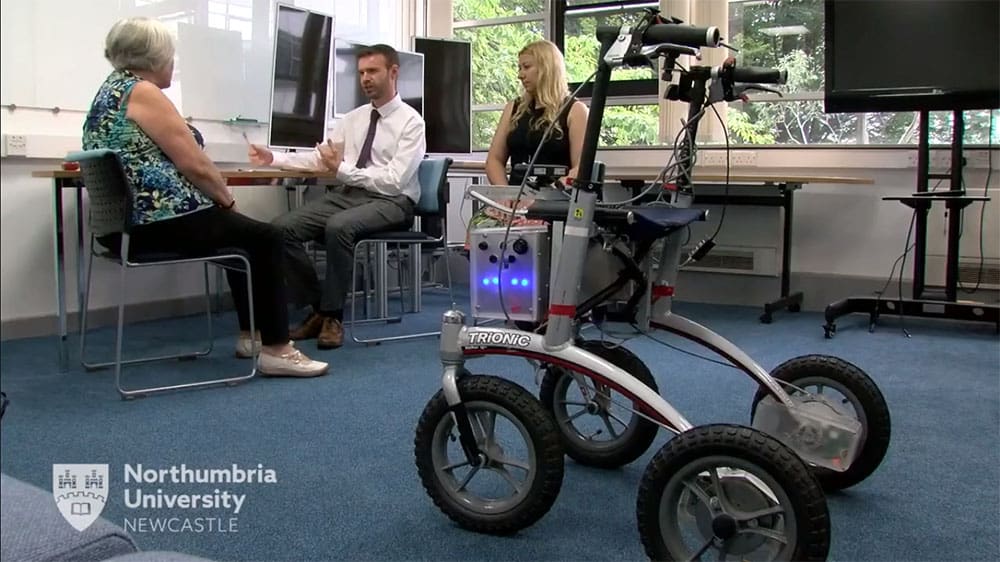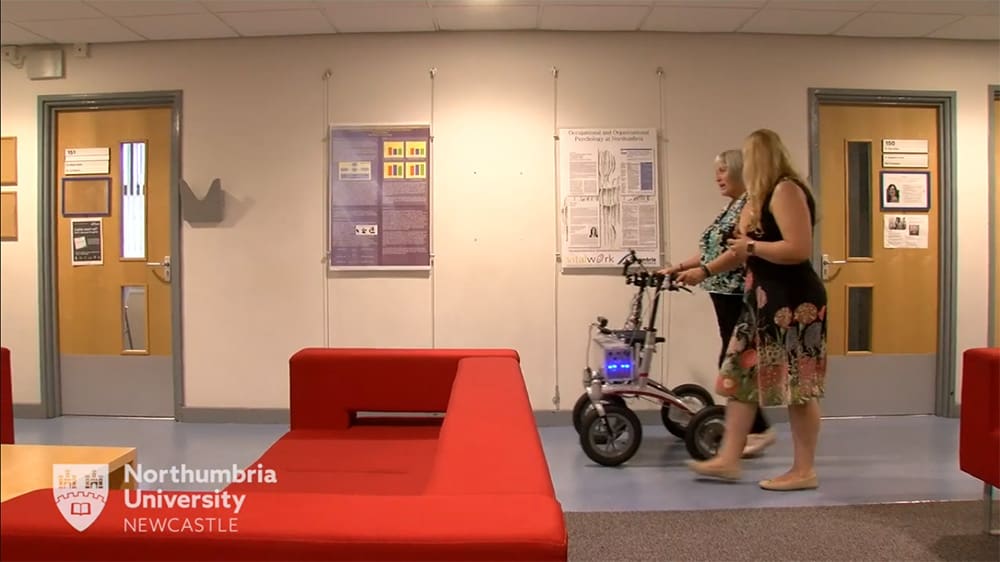University researchers develop electronic walking frame that could keep older adults more active

Northumbria University is developing a robotic walking frame that could help older people recover more quickly after a fall or injury, reducing the length of time they need to stay in hospital.
The electronic walker acts as a ‘virtual physiotherapist’, encouraging a patient to be as active as possible and assessing how exercises have been carried out.
It is fitted with technology that enables it to issue voice commands to its patient, encouraging them to complete regular activities like going for a walk, gripping, standing and balancing, then assessing their performance.
Additionally, the frame offers physical support to those who need it.
Being supported by a team from Northumbria University’s Psychology and Communication Technology (PaCT) Lab, the development of the frame comes as part of a wider European project.
The project is called ACANTO, a European Union-funded research initiative which focuses on how technology can address the challenges of ageing and looks at ways to encourage older individuals to be more active.

Initially designed to be used in hospitals, the frame would stay by the patient’s bed to encourage them to complete regular mobility and strength exercises with an aim of helping them to leave care earlier.
Assessment data gathered by the walker can be fed back to the care team monitoring the patient’s progress, which provides detailed data of walking patterns or gait that would allow the team to assess if the patient was at risk of future falls.
Professor Lynne Coventry, Director of Northumbria’s PaCT Lab, explained: “Mobility is a critical factor when it comes to the aging process. Reduced mobility can have a serious impact on health, and once an older person gets to a certain level of immobility, their decline can really accelerate.
“This technology aims to help maintain the mobility of older adults, by understanding what goes wrong if they have a fall, encouraging them to be physically active as much as possible, or helping to prevent falls in the first place.
“The frame will also help physiotherapists to understand the physical motion of older adults as they’re walking and establish if they have any problems. It can also help physiotherapists to administer tests and to set exercises for patients to do on daily basis to keep them on their feet.”
The walker is now being tested with a group of volunteers aged 65 or older, in labs and along corridors at Northumbria University, to try and mirror the hospital environment as much as possible.
Professor Coventry added: “In the design, we’ve added a persuasive element to encourage the patient, so the walker will wake up and send a message that it’s time to go for a walk.
“We’re also able to add in goals that the walker can encourage the patient to complete. It’s a great companion for the patient to have, and feedback so far from our testers has been really positive and encouraging.”
Pauline, 68, who suffers from various chronic health issues including rheumatoid arthritis, is one of the volunteer testers.
She said: “This is exactly the kind of thing I need to keep me moving. It means I don’t have to rely on a professional; instead it can guide me and cope with me being variable in my condition and mobility – which is a big thing.
“Keeping active is really important, but as you get older that becomes more difficult. This frame could encourage and enable you to keep on your feet and also hopefully keep your pain levels down as it adjusts with you.”

